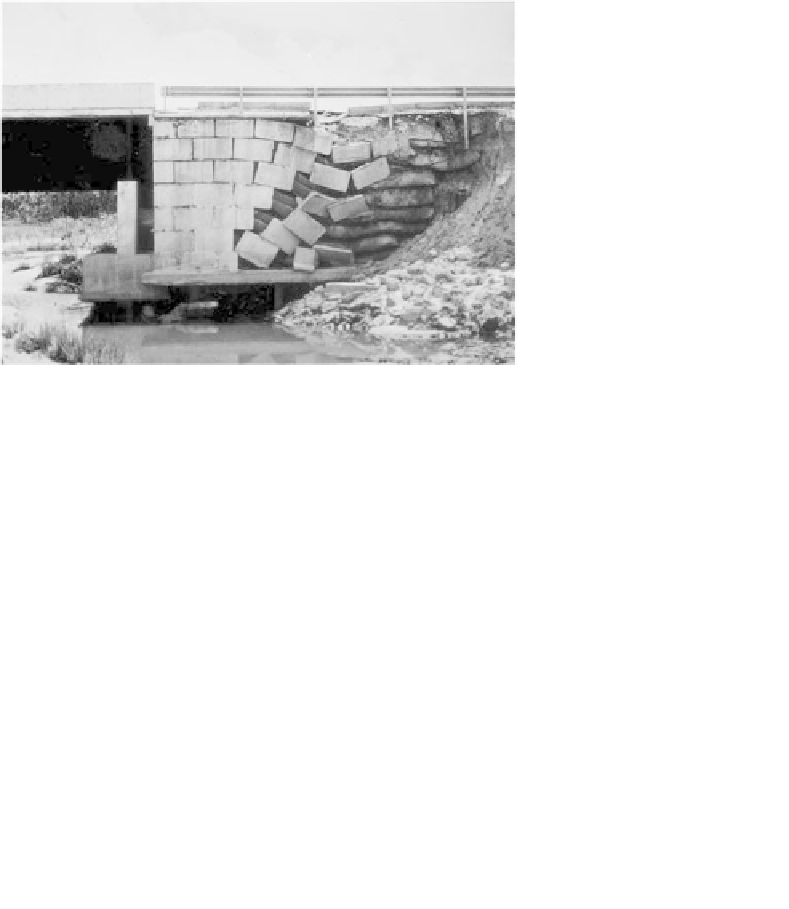Geoscience Reference
In-Depth Information
Figure 11
Face units collapse in the Mucambo River reinforced structure after a river
flood.
obtain a better stress distribution to the foundation soil and to minimize
the effect of differential settlements close to the bridge structure. This,
however, creates regions with significantly different stiffnesses
(reinforced mass and backfill) and if the foundations soil settlements
are not prevented by some effective way, damage to the pavement can
occur, as was observed in some cases.
3. The use of piles with caps along the base of the structures improved
their performances and no damage or noticeable vertical displacements
were observed where this solution was employed.
4. The Sauipe River reinforced structure was placed directly on a layer of
sand overlaying the soft clay. The thickness of this sand layer was not
enough to prevent significant stress increments to reach the soft soil
deposit. Therefore, large vertical displacements were observed in this
structure that caused some damage to the highway pavement that had to
be repaired. Since then no additional repair was necessary. However,
repairs may still be required in the future due to further settlements
caused by the consolidation of the soft clay.
5. The Mucambo River structure had its lateral face severely damaged by
a flood. Even with the erosion of part of the backfill soil and loss of
some facing elements, the reinforced mass was still able to sustain the
large differential settlements that took place and only minor damage
was observed in the highway.









Search WWH ::

Custom Search